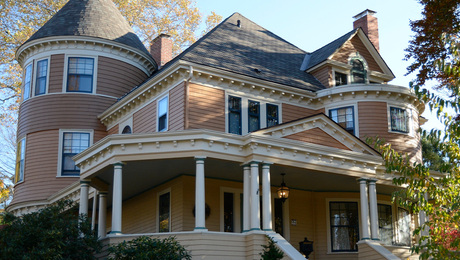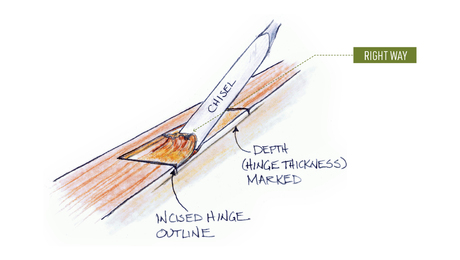Leak-free Windows Series: Self-draining Sill Pans
Because all windows leak at some point, rough openings need to shed water.
Water management: drain water, don’t trap it.
You can slope the sill with a piece of beveled siding or install a back dam as shown in the detail. On top of the sill, install a sill pan — either a peel-and-stick membrane or a pre-formed sill pan.
Creating a self-draining sill pan is the most important part of window installation. Right now, if I put down sill flashing tape on top of a flat rough opening, the problem I’m going to run into is that half of the time the water can drain to the inside and the other half it can drain to the outside.
Backdams are a simple way to keep water out
Now, I want to increase the likelihood that the water is going to drain to the outside of the wall. There are a couple of options that I can use to do that. The first and simplest is to use some scrap plywood or other wood to create a positive back dam, where the wood is built up along the back edge of the rough opening and the sill pan material is folded down to create a lip on the inside edge so the water can’t drain to the inside. Now, that runs into a couple of problems because you may end up with a rough opening that isn’t deep enough to accommodate the window itself plus this solid piece of material built up back there; you may end up with a height problem. An alternative to that is to use flexible or compressible types of back-dam material; one of those is using a backer rod and the other is using a peel-and-stick insulating tape.
Sloped sills leave nothing to chance
Another way to create a simple draining sill pan is to slope the surface of the rough opening on the sill. That can be done by applying a piece of beveled cedar siding or beveled pine siding. One of the things you have to keep in mind if you’re going to use a clapboard system is you’re going to end up kicking up the rough opening sill height by about 3/8 inch, so you need to make an adjustment for that. On the advantage side, it’s sloped, so that’s going to drain the water. Many of the other systems—either that piece of plywood strip or the foam backing strips—are only creating a back dam, and it’s not going to create a slope to the bottom of the sill, so water isn’t going to tend to run out; it’s just going to tend to puddle there. And that can be a concern if you have a wood-framed window: That wood might be sitting in a puddle of water over a period of time.
For places with wind-driven rain, use both
One thing you can do—and I’ve done in some cases—is actually install both. I’ve put down a piece of beveled cedar siding and then put a piece of foam to give me both the back dam protection and that sloped sill. So, there’s a whole bunch of different ways of approaching the whole system.
Videos in this members-only series:


























